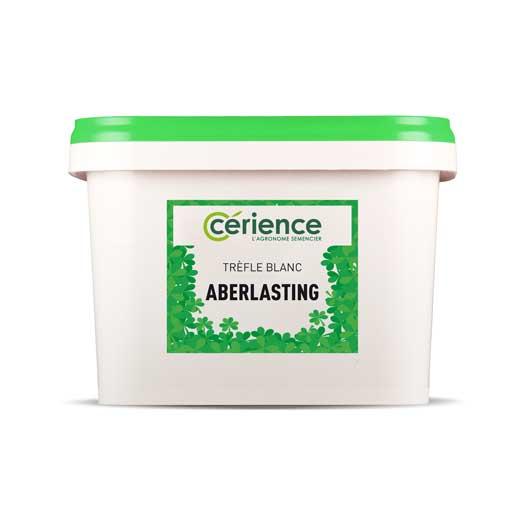Forage species
Aberlasting
White clover
-
ABERLASTING is the first variety resulting from a cross between a white clover and a Caucasian clover to combine the advantages of both species.
Fonctionnal benefits
- Excellent durability and ability to regrow even under intensive grazing;
- High resistance to water stress;
- High resistance to cold.
The benefits in detail
-
ABERLASTING is characterised by its excellent durability and ability to regrow even under intensive grazing conditions:
- ABERLASTING combines a stoloniferous root system, characteristic of white clovers, and a rhizomatous root system, characteristic of Caucasian clovers.
- The rhizomes provide deeper roots and therefore greater resistance to trampling.
ABERLASTING is also more resistant to water stress than other white clovers:
- Its deeper, more developed root system means it stays green for longer, improving its durability.
ABERLASTING is also more resistant to cold:
- Crossing with Caucasian clover improves its resistance to cold compared with varieties derived from pure white clover lines.
- ABERLASTING can withstand temperatures as low as -20°C, whereas such temperatures destroy 70% of white clovers.
No more white clover!
-
MIXCLOVER, a mixture of 3 white clovers
MIXCLOVER combines 3 varieties of white clover selected for their complementarity and to optimise the yield of your meadow.
To find out more, click here!
Download
-
Non-contractual document. The information contained in this document is for guidance only and may vary according to soil and climatic conditions.


